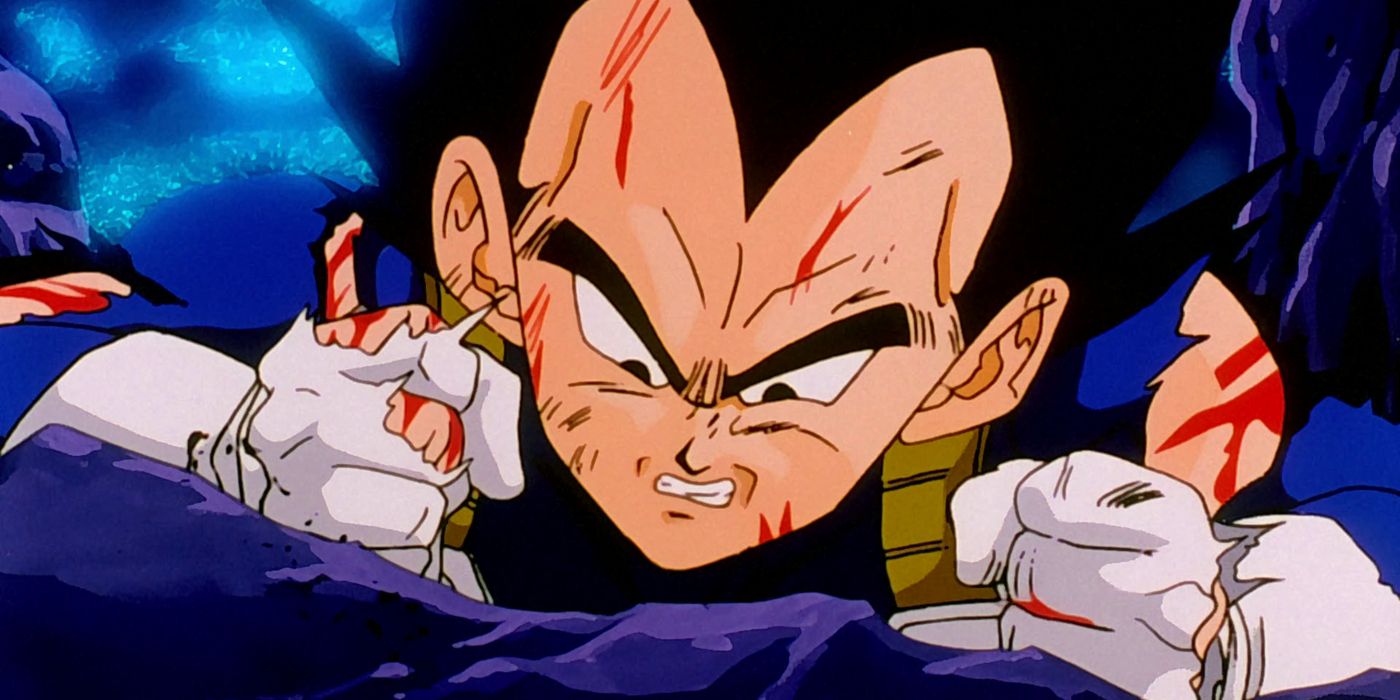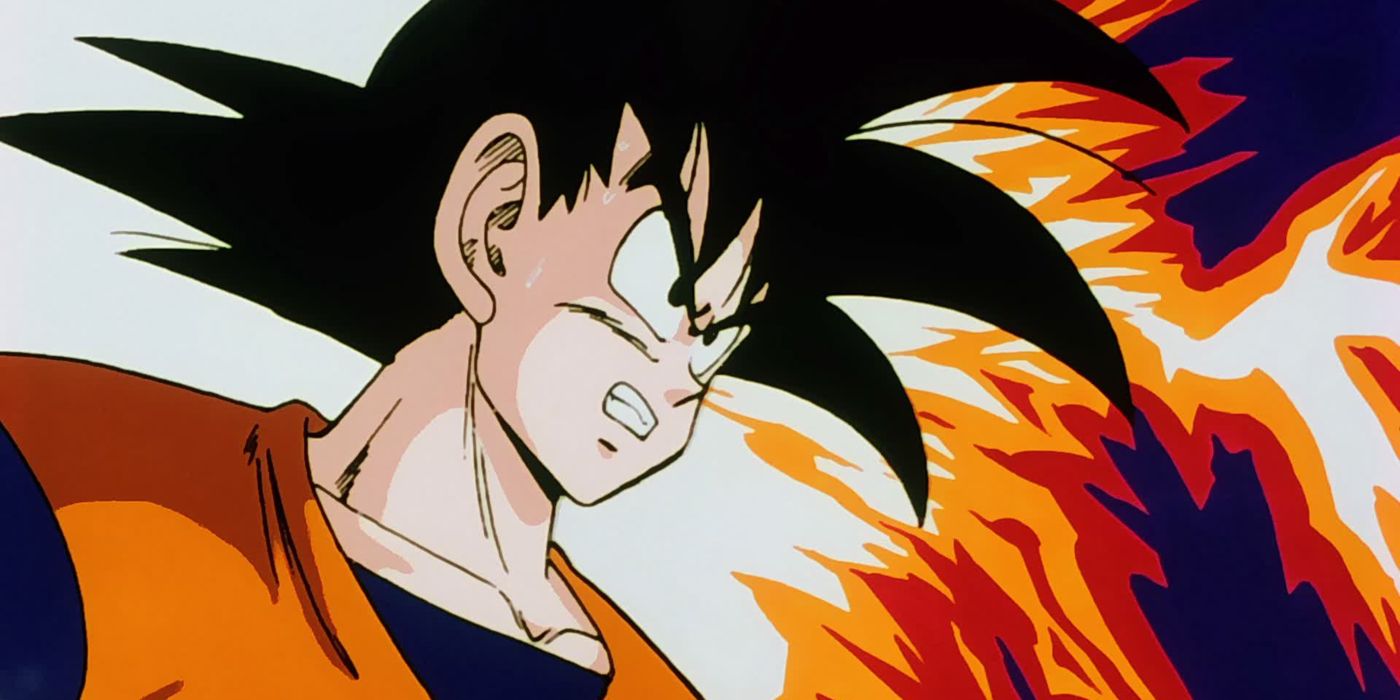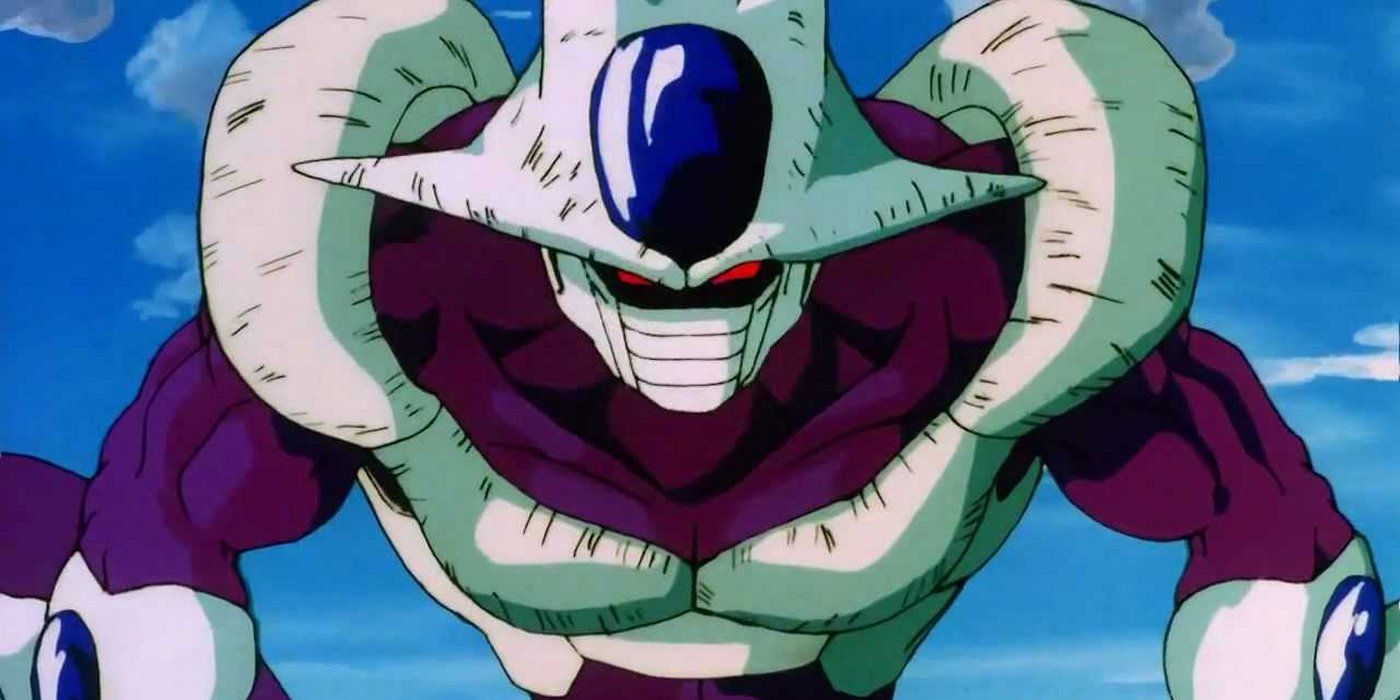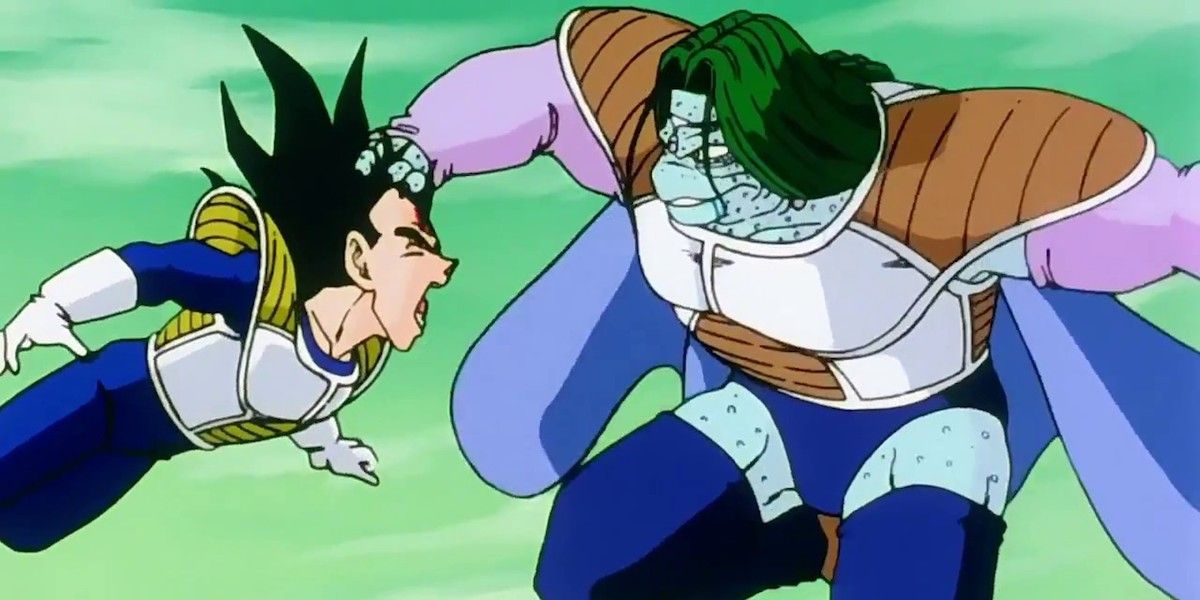It’s time to recognize that, for as influential as Dragon Ball Z was and is, Dragon Ball Abridged is the best way to get up to speed on what the series has to offer. Dragon Ball Z has been finished since the 90s and now Dragon Ball Super has come to a close, everybody can finally admit that the popular comedic fan dub/re-edit might just be superior.
Dragon Ball Abridged is a fan-based parody of Dragon Ball Z made by a production outfit called Team Four Star. Team Four Star uses the same animated footage as the show while recording different voice-over lines filled with jokes and re-editing parts of the series to create shorter episodes and stellar comedic timing. The entire series has been made available for free on YouTube. In total, there are sixty official episodes interspersed with occasional specials and multi-part episodes, mostly running for about 10-15 minutes apiece.
Related: Dragon Ball Super Future: What's Next For The Franchise?
While it might seem like heresy to claim that a parody series did it better than the originals, Dragon Ball Abridged certainly merits consideration. Both series have flaws and Dragon Ball Z certainly isn’t bad, but many of its best parts remain intact in the fascinating world of Dragon Ball Abridged.
- This Page: The Differences Between Dragon Ball Z & Abridged
- Page 2: How Dragon Ball Abridged Improves The Anime
The Biggest Differences Between Dragon Ball Z &Dragon Ball Abridged
With the name of the series including the word “abridged,” it makes sense that Dragon Ball Abridged would be shorter than Dragon Ball Z. However, the extent to which that’s true really staggers the imagination. Even if you count all of the special and multi-part episodes as their own programs, Dragon Ball Abridged spans 70 episodes to reach the conclusion of the Cell Games Saga. In Dragon Ball Z, the Cell Games Saga concludes with episode 194. Even in the updated and drastically cut down version of Dragon Ball Z, Dragon Ball Z Kai, the Cell Games Saga ends on episode 98. Each of Dragon Ball Z and Dragon Ball Z Kai’s episodes run for about 22 minutes apiece, almost ten minutes longer than the average Dragon Ball Abridged episode. To put it another way, you could watch Dragon Ball Abridged and get all of the important information in Dragon Ball Z up until the end of the Cell Games Saga in less than half the time it would take you to get to the same point in Dragon Ball Z Kai and less than a quarter of the time it would take to watch Dragon Ball Z until that point.
Dragon Ball Abridged accomplishes its shortened parody by doing what Dragon Ball Z Kai did but without the need to pace episodes in 22-minute increments. This means that many of the miscellaneous plot threads that might take an entire episode or more to wrap up in the main series can be finished in a two-minute gag or skipped entirely. An example of this occurs in Episode 4 of Dragon Ball Abridged when they lampoon the events of the Princess Snake episode of Dragon Ball Z in an extended reference Metal Gear Solid that lasts only a couple of minutes.
On top of that, fights can be shortened down to their critical moments without losing much of the dramatic tension. Keeping the tense action of the animation as well as the biggest story beats intact means that Dragon Ball Abridged keeps up a nonstop momentum with both humor and action. That driving energy carries the viewer through barrages of jokes and action at such a pace that, while not every joke works, enough of them land to keep the series fun while covering the necessary narrative beats to remain recognizably Dragon Ball.
Related: Dragon Ball: 20 Strange Rules Every Saiyan Has To Follow
The Biggest Problems With Both Dragon Ball Abridged And Dragon Ball Z
Humor ages quickly. Even though Dragon Ball Abridged began streaming in 2008, many of the jokes that worked a little over a decade ago don’t fly as well today. Early episodes casually throw out words like “retarded” or make jokes about characters being gay. Those moments definitely don’t hold up well, though the rapid-fire nature humor often obscures the jokes that don’t work by today’s standards. The saving grace for Dragon Ball Abridged happens to be its production time. It turns out that producing a parody series for free takes a lot of time and effort, so only a handful of episodes have released every year. That means as the series progresses and Team Four Star’s comedic chops become more honed, the series outgrows or evolves the more unfortunate jokes made in the late 2000s and early 2010s.
Dragon Ball Z has certainly aged with time, too. Frankly, race has always been one of the issues that Dragon Ball struggled with even in its early days (see Staff Officer Black). All of that came to a head with the introduction of Mr. Popo in the original Dragon Ball. However, Mr. Popo recurs throughout Dragon Ball Z and he’s divisive to say the least. Mr. Popo was heavily modeled after the blackface popularized by American entertainers and animators during the early 1900s. Blackface carried on in Japan and the wider Asian world, especially in manga and animation, long after it became unacceptable in the US in the wake of the Civil Rights Movement. It was shocking that Mr. Popo ever managed to make it onto a syndicated television show, even in the 90s. It’s something even the companies behind Dragon Ball recognized as the 4Kids broadcast of Dragon Ball Z Kai changed Mr. Popo to be a jarring blue color and Viz Media tried to reduce the size of Mr. Popo’s lips in the manga they distributed in the US.
Dragon Ball Z’s frustrating issues don’t end there, either. Fans frequently cite beloved characters like Yamcha and Tien rapidly become irrelevant over the course of the series as a source of dissatisfaction. Power creep, where a protagonist becomes more powerful than their allies to the point that they become inconsequential, is present across many shonen anime series, but it’s particularly pronounced in Dragon Ball Z. On the flip side of that, seemingly important events, like Nail and Kami fusing into Piccolo or Super Kami Guru’s unlocking of hidden potential, are often used to lazily write characters back into usefulness the series (often at the expense of other characters), never to be spoken of again.
Page 2 of 2: How Dragon Ball Abridged Improves The Anime
How Dragon Ball Abridged Fixes Many Dragon Ball Z Problems
The extremely long production times of Dragon Ball Abridged allow Team Four Star to come full circle and actually address some of the concerns in both its own history and in Dragon Ball Z. Dragon Ball Abridged goes out of its way to fix and improve upon elements of Dragon Ball Z fans found lackluster. When it comes to Mr. Popo, Dragon Ball Abridged expresses an awareness of the character’s roots and attempts to counter it by mythologizing him into a terrifying eldritch entity. This works both for laughs and also as an attempt (with varying levels of success) at defanging the character design, which the parody can’t really get around using.
For characters fading into irrelevance due to power creep, Dragon Ball Abridged is careful to give everyone time to shine with clever writing. Tien, for example, receives an amazing moment in the battle against Cell, using his kikoho to repeatedly black the monster into a hole. After that, Dragon Ball Abridged allows him continued relevance by giving him quippy, snarky lines at more powerful opponents and rivals like Vegeta. One of the most brilliant moves in Dragon Ball Abridged gives new life to some of the more important and often forgotten parts of Dragon Ball Z: Piccolo’s fusions. Instead of Nail and Kami disappearing into Piccolo forever, Dragon Ball Abridged dedicates time to the inner dialogue between Piccolo, Nail, and Kami for cut-away gags. This fantastic concept works to great comedic effect and absolutely creates additional character development for Piccolo who begins Dragon Ball Abridged as a desperate loner with a deep need for companionship.
Finally, when it comes to its own jokes, Dragon Ball Abridged knows how to course correct. Over time, the series phased out the use of words generally seen to be less comedic and more in poor taste, coming up with more entertaining and creative insults in their stead. On top of that, the early use of gay as a joke evolved over time. Initially, it started as a recurring line Yamcha used to try and belittle others. Given how quickly Yamcha becomes the punching bag of Dragon Ball Abridged, it becomes clear Yamcha is a joke in his own right; his occasional use of gay jokes toward allies and enemies included. Perhaps the bigger example of this is the run of gay jokes directed toward Zarbon in the early episodes of Dragon Ball Abridged, though those jokes are revealed to be the build-up to the joke that Zarbon is actually straight. It can all land a bit flat early on without additional context and that’s something that’s largely fixed as Dragon Ball Abridged progresses.
Related: Dragon Ball Super: Broly Channels Everything You Love About Dragon Ball
Why Dragon Ball Abridged Was Just Better
The bottom line is that Dragon Ball Abridged lands funnier jokes, keeps more of its momentum, and creates something that’s more accessible to the uninitiated while providing a new spin on all of Dragon Ball. References to Dragon Ball lore and strange allusions to various pieces of pop culture ephemera make for an eclectic sense of humor that isn’t really comparable to anything else. Dragon Ball Abridged season 1, for instance, ends with the ghost of Nappa serenading the audience with a rendition of the Ghostbusters theme where all the words are his own name.
The editing that pares down Dragon Ball Abridge to less than half the runtime of Dragon Ball Z Kai? It’s phenomenal. The result is a show that feels flexible and up to the task of keeping things moving along at a breezy clip. You don’t have to wait for several episodes for important things to happen because tangentially important information from filler episodes can be relayed in five seconds of exposition, freeing up the show for more jokes, iconic fight scenes, and more. On top of that, the absolute mastery of comedic timing for their various verbal gags and visual slapstick jokes leads to numerous laughs.
One thing that hasn’t been brought into this conversation is how Dragon Ball Abridged is able to recontextualize some of Dragon Ball Z’s content beyond just the anime series. Team Four Star has done humorous musical parodies that do things like dive into the untold backstory of Mr. Popo or adapted entire Dragon Ball Z films into movies about the spirit of Christmas. In some cases, it has even made already awesome moments from the anime even better rather than simply lampooning them. Notably, the conclusion to the Cell Games saga in Dragon Ball Abridged saw a three-part episode 60 where Gohan reaches Super Saiyan 2 due to the sacrifice and speech of Android 16. With a custom soundtrack, editing that condenses the moment to a more effective dramatic length, and the slight traces of comedy leading up to it, the transformation lands so much harder than in the official anime.
Dragon Ball Abridged was better than Dragon Ball Z.





